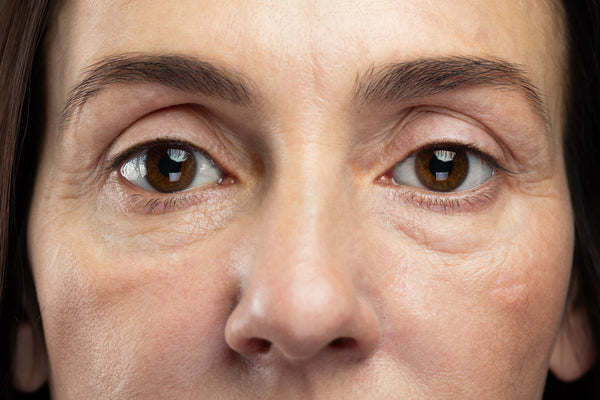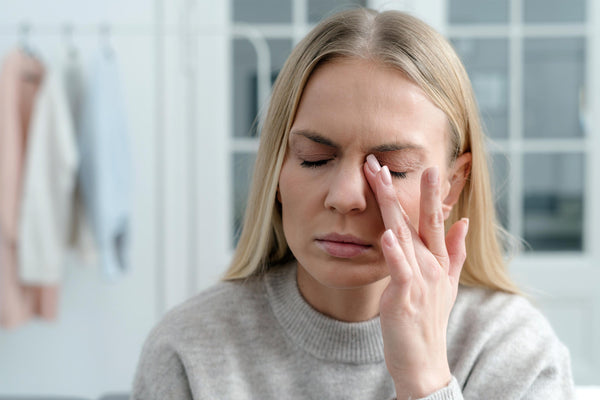
With the arrival of darker evenings, we’re likely to be spending more time in front of screens than we were in the summer, while in daytime we can find ourselves out in cold autumn wind. These are all key contributors to dry eye syndrome, so now is the time to think about how to help your eyes stay healthy through the autumn and winter months!
What is dry eye syndrome?
From time to time we all feel like our eyes can get dry and tired, but if your eyes regularly feel red, sore and uncomfortable, you might be suffering from dry eye syndrome.
Dry eye is common and occurs when your tears evaporate faster than usual, or if your eyes cannot produce enough tears. Tears don’t just flow when you start welling up while watching a sad film, they should always be there, to constantly lubricate your eyes. You can also have dry eyes despite tears rolling down your cheeks – if the tears are of poor quality, they stay on the surface of your eyes.
Dry eye becomes more common as you get older because we produce fewer tears and our eyelids are less effective in spreading the tears across the surface of our eyes – about 33% of people over 65 experience problems with dry eyes.
However, this condition is becoming more prevalent in young people, and it’s thought to be related to excessive screen use. When we’re looking at a screen we blink less frequently, at a lower rate and not fully, so our tears evaporate and are not spread evenly over the surface of the eyes.
What are the symptoms?
If you have itchy eyes, redness, the sensation of having something in your eye, a gritty feeling or watery eyes as you try to over-compensate for the lack of tears, you could have dry eyes.
At Leightons we can diagnose dry eye syndrome by thoroughly discussing your symptoms and making an assessment of the front of your eye (the anterior eye). This includes a fluorescein or lissamine green dye test. These dyes highlight dry or damaged cells and help us examine the flow of tears.
If you think you have dry eye and exhibit some of the above symptoms, contact our Dedicated Patient Support team on 0800 40 20 20 or book an appointment online for diagnosis and treatment.
Why does it happen?
There’s no single cause of dry eye syndrome, but there are a number of factors that can contribute:
* Due to dry, windy weather or even high altitude
* Central heating and air conditioning will further evaporate tears in the home, office or car
* Underlying medical conditions, such as blepharitis (an inflammation of the eyelids), lupus, contact dermatitis and rheumatoid arthritis
* Side effects of some medicine, such as antihistamines, antidepressants and diuretics
* For women, dry eye can happen during menopause, pregnancy, or while using the pill
* Following laser eye surgery many people initially are aware of having dry eye
* Activities like reading, writing or working at a computer without breaks. Try blinking regularly to stimulate the flow of tears around your eyes
How can it be treated?
You can make the most of your natural tears by drinking more fluids and staying well hydrated, and eating more foods containing omega 3 and omega 6, such as oily fish, sunflower seeds and walnuts.
You can also try artificial tear eye drops. This is a common treatment clinically proven to relive the gritty, sore sensation of dry eye syndrome. Pop into your local Leightons branch to pick up artificial tear eye drops such as Thealoz Duo – a dual-action eye drop that hydrates and protects the surface of the eye.
We can take a look
If you’re unsure if you have dry eye syndrome and want to book an eye test to find out, or simply want to try eye drops, just speak to your local eye care experts at Leightons.
Call us on 0800 40 20 20 or visit your nearest branch. You can also book an eye exam online.







